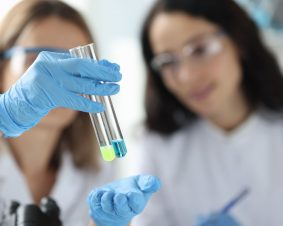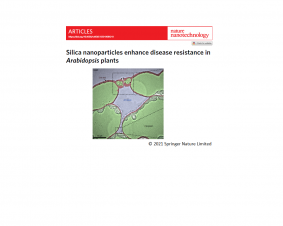 >
Spotlight May 2022: Nano-ghosts” – Risk assessment of submicron-sized particles in food biased towards fictional “nano”
>
Spotlight May 2022: Nano-ghosts” – Risk assessment of submicron-sized particles in food biased towards fictional “nano”
The European Commission has issued a ban on the colorant titanium dioxide in food. Titanium dioxide, which provides a nice shine and bright white color, can potentially damage genetic material.
We chose a review article from 2022 for the May 2022 Spotlight that addresses the risk assessment of food-grade titanium dioxide (E171) and the resulting potential bias against nanoscale titanium dioxide.
The authors are not interested in avoiding a ban on the use of E171 in food. Rather, it is important that the same bias against a fictitious “nano” hazard be avoided in the future.
The E171 case illustrates how the risk assessment of manufactured particulate food additives is potentially biased toward a supposed nanoscale particle hazard.
The authors summarize that, for example, subacute studies show that oral exposure to E171 does not cause toxicity in rodents or that chronic toxicity studies show that oral exposure to E171 does not cause carcinogenicity or other long-term adverse effects in rodents, even when tested at high doses.
The objective of this review is to reassess the literature on the toxicity of titanium dioxide particles, focusing on studies that are directly relevant to the evaluation of E171.
Original Publication:
Naegeli, H. and C. Gsell (2022). „“Nano-ghosts“: Risk assessment of submicron-sized particles in food biased towards fictional „nano“. EXCLI J 21: 279-299.

Weitere Spotlights
Spotlight April 2023: Recycling rare earths – bacteria assist in the circular economy
Rare earths are important components of wind turbines, catalytic converters, fibre optic cables and plasma screens. Since the 17 metals grouped under this term are indispensable for modern technologies, demand and costs are constantly rising. The occurrence of productive mining sites is limited and the production is often costly and environmentally harmful. The advantages of […]
Read moreSpotlight September 2023: Fishing for raw materials with proteins
The so-called rare earth elements such as neodymium, dysprosium or cerium are elements that are of great importance for the energy transition; among others they serve as components of magnets in generators for electric power generation, act as luminescent materials in energy-saving lamps or as part of the car exhaust catalytic converter. The global production […]
Read moreSpotlight December 2021: Silica nanoparticles improve plant disease resistance
The resistance of plants to various pathogens is often increased in agriculture with various chemicals (“fertilizers”). A new direction is being taken with the use of nanoparticles. These can be sprayed on the plants. In the present study, the model plant Arabidopsis was used to investigate whether silicon dioxide nanoparticles (SiO2) can increase resistance to […]
Read moreSpotlight November 2021: Safe Materials from Scratch – Safe-by-Design in Materials Research
Advances in the field of materials science continue to amaze us with nanoscale materials with extraordinary chemical, electrical, optical, and numerous other properties. However, some nanoscale materials have different toxicological profiles compared to the same bulk material. Since safety issues are usually addressed just before launching a product into the market, safety issues may be […]
Read more

